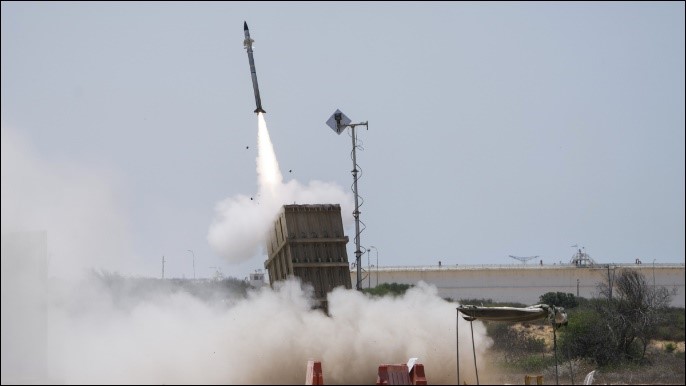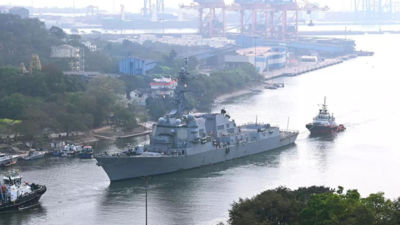Description

Disclaimer: Copyright infringement not intended.
Context
- The “interception capabilities” of the indigenous long-range surface-to-air missile (LR-SAM) system, being developed by DRDO under the ambitious Project Kusha, will be “comparable” to the formidable Russian S-400 Triumf air defence system.
Project Kusha
About
- India's own long-range air defence system, titled 'Project Kusha', is being developed by the Defence Research and Development Organisation (DRDO).
Capability
- It will be capable of detecting and destroying enemy projectiles and armour, including cruise missiles, stealth fighter jets, and drones at long range.

Approach
- Project Kusha encompasses a multifaceted approach to enhance India’s air defence capabilities.
Recent Acquisitions
- The defence ministry recently granted the much-anticipated Acceptance of Necessity (AoN) for the acquisition of five squadrons of this advanced system, designed specifically for the Indian Air Force (IAF).
Interceptor Missiles of Project Kusha
- At the heart of Project Kusha are three long-range Interceptor missiles, each serving as a critical component of India’s air defence system.
- These missiles will be engineered to possess ranges of 150km, 250km, and 350km, thereby providing a comprehensive shield against aerial threats.
- Furthermore, they are designed with a remarkable single-shot kill probability of at least 85%, offering a high level of confidence in their effectiveness.
Remarkable Features of Project Kusha
- One of the remarkable features of this air defence system is the ability to increase the probability of killing to a staggering 98.5% when two different missiles are launched sequentially, with a mere five-second gap.
- This dual-missile approach ensures a robust response to aerial threats, further enhancing the nation’s security.
- A pivotal aspect of Project Kusha is the development of long-range surveillance and fire control radars.
- These cutting-edge radars will possess the capability to scan airspace up to 500-600km deep into enemy territory, offering crucial strategic advantages.
- This capability empowers the Indian Air Force with the ability to monitor the entire Pakistani airspace and penetrate deep into the Tibetan plateau, where the People’s Liberation Army Air Force (PLAAF) airbases are strategically located.
- The air defence system is also set to incorporate a secondary very high-frequency (VHF) radar array, a key element in the project.
- VHF radar arrays are renowned for their superior detection capabilities against stealth platforms, significantly enhancing the system’s ability to identify and respond to aerial threats.
Why does India need Project Kusha?
- The need for such a project is quite high in current times with threats emerging from neighbourhood countries like Pakistan and China. The latter also uses Russia's S-400 missile system and has deployed several missile batteries across the Line of Actual Control (LAC).
- China has also accelerated the production of indigenous defence capabilities to strengthen its military. Although they are considered less capable than the S-400, nevertheless they represent a serious threat to India. Considering that China can fire missiles at India, it is pertinent that New Delhi arm itself with state-of-the-art air defence systems.
- India's relations with China have nosedived following the Galwan Valley dispute in 2020, marking the most serious military conflict between both sides. India and China's strained relationship has been fueled by recent Chinese provocations, including releasing the 2023 edition of its “standard map”, staking a claim over Arunachal Pradesh, Aksai Chin region and denial of visas to Indian athletes in the Hangzhou Asian Games.
- Another thing to be taken into consideration is that China is an 'all-weather friend' to Pakistan, and might help Islamabad to strengthen the latter's defence capabilities to be used against India.
- Faced with the challenges, 'Project Kusha' is another effort by India in deterrence against a two-front conflict.

Conclusion
- In summary, Project Kusha represents India’s resolute commitment to advancing its air defence capabilities.
- With the development of long-range Interceptor missiles, cutting-edge radar technology, and a robust response strategy, India is poised to strengthen its defence infrastructure and safeguard its airspace effectively.
- As the project progresses, India is primed to meet the evolving challenges in the realm of national security and enhance its ability to respond decisively to potential threats.
|
PRACTICE QUESTION
Q. Project Kusha represents India’s resolute commitment to advancing its air defence capabilities. Elucidate.
|














